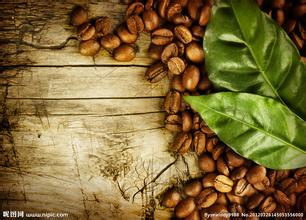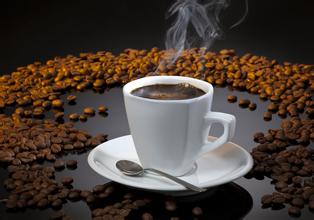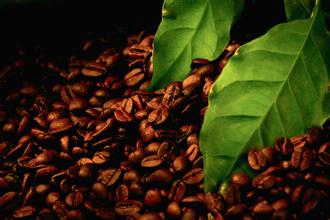Introduction to the description of taste and flavor in the treatment of Colombian coffee red wine
Introduction to the description of taste and flavor in the treatment of Colombian coffee red wine
Example 1:
The coffee fruit is peeled by a Pinhalevse peeling machine, and the peeled coffee fruit is fermented with about 2% Pichia anomala bacteria, 2% Saccharomycopsis fibuligera bacteria and 2% Aspergillus niger bacteria at 40 degrees Celsius for 24 hours, then washed twice with an ultrasonic cleaning machine, then soaked and fermented in clean water for 24 hours, then dried to 10% moisture content in a blast oven, and then shelled with a sheller.
Example 2:
The coffee fruit is peeled by a Penagos peeling machine, and the peeled coffee fruit is fermented with 2.5% Pichia fermentans and 2.5% Pichia membranifaciens bacteria at 36 degrees Celsius for 36 hours, then washed twice with an ultrasonic cleaning machine, then soaked and fermented in clean water for 16 hours, then dried in the sun to 11% moisture content, and then shelled with a sheller.
Although it looks a little complicated, I think it should be clear about the handling of red wine. If there is anything else that has not been explained clearly, you can correct it.
The selected coffee cherries are placed in a specific container by the farmer's uncle (the beans used in the Australian barista Sasa competition are placed in a metal container). But in any case, the container should have a device similar to a red wine fermentation suppository or a single exhaust valve. In this way, carbon dioxide can be spilled through the device to control the concentration of air in the container. At this time, the coffee cherries in the container are fermented by acetic acid, and the beans from this reaction are relatively bright and clean, and the red wine treatment with lemon-sour coffee beans, also known as red wine treatment, is inspired by the brewing process of red wine. At present, only eight estates in Colombia have successfully introduced coffee beans treated with this method to the market. According to the data of these eight estates, we can roughly divide the types of red wine treatment into: acetic acid fermentation (Aerobic aerobic fermentation), lactic acid fermentation (Anaerobuic anaerobic fermentation), mixed fermentation (Mix Fermentation=Aerobic+Anaerobuic).
The traditional treatment method is difficult to control the changeable fermentation degree of coffee beans. But the rules of red wine treatment can ensure the quality of coffee beans by controlling the PH value, even temperature and humidity, and airtight fermentation makes the aromatic substances more difficult to volatilize. Before writing this article, the editor looked through all the data of the estates in Columbia that used red wine treatment, analyzed Sasa's description of the beans he chose this treatment during the competition, and looked at the fermentation principle of fruits in biology. Even so, there is still no detailed description in the data, including the official website description of the bean manor is only limited to the flavor. It is believed that this new way of handling is still in a state of secrecy and has not been popularized. of course, there is no comment.

Important Notice :
前街咖啡 FrontStreet Coffee has moved to new addredd:
FrontStreet Coffee Address: 315,Donghua East Road,GuangZhou
Tel:020 38364473
- Prev

Tippi Katim Coffee characteristics, taste and flavor description of manor production area
Tippi Katim Coffee characteristics, taste and flavor description of the manor production area I heard that Yunnan initially from 50000 mu of old varieties of coffee trees, and then reduced to 5000 mu, and now there are not even 500mu left. do the old varieties really want to become extinct? I was a little surprised to see that the number of hits in this article was more than 2000. I was a little surprised. I looked back at the text written in 2012, afraid because of myself.
- Next

Flavor description of Honduran Coffee beans introduction to manors in producing areas
Taste description of Honduran Coffee beans: rbara), El Paraiso, Copan, La Paz, Comayagua and Olancho. The average planting height is more than 1100 meters above sea level. The variety of coffee is Arabica, and 69% belongs to HG high and low coffee.
Related
- Detailed explanation of Jadeite planting Land in Panamanian Jadeite Manor introduction to the grading system of Jadeite competitive bidding, Red bid, Green bid and Rose Summer
- Story of Coffee planting in Brenka region of Costa Rica Stonehenge Manor anaerobic heavy honey treatment of flavor mouth
- What's on the barrel of Blue Mountain Coffee beans?
- Can American coffee also pull flowers? How to use hot American style to pull out a good-looking pattern?
- Can you make a cold extract with coffee beans? What is the right proportion for cold-extracted coffee formula?
- Indonesian PWN Gold Mandrine Coffee Origin Features Flavor How to Chong? Mandolin coffee is American.
- A brief introduction to the flavor characteristics of Brazilian yellow bourbon coffee beans
- What is the effect of different water quality on the flavor of cold-extracted coffee? What kind of water is best for brewing coffee?
- Why do you think of Rose Summer whenever you mention Panamanian coffee?
- Introduction to the characteristics of authentic blue mountain coffee bean producing areas? What is the CIB Coffee Authority in Jamaica?

